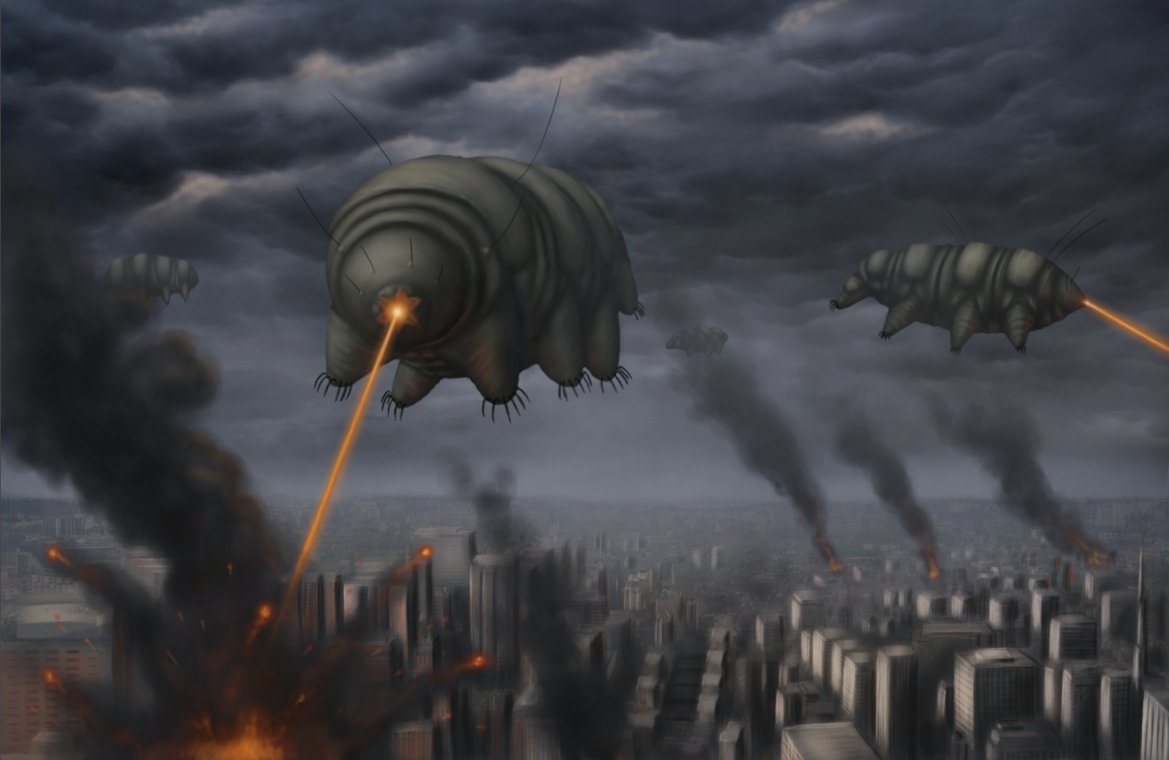It looks like you're using an Ad Blocker.
Please white-list or disable AboveTopSecret.com in your ad-blocking tool.
Thank you.
Some features of ATS will be disabled while you continue to use an ad-blocker.
share:
Pass the tardigrade sauce please!
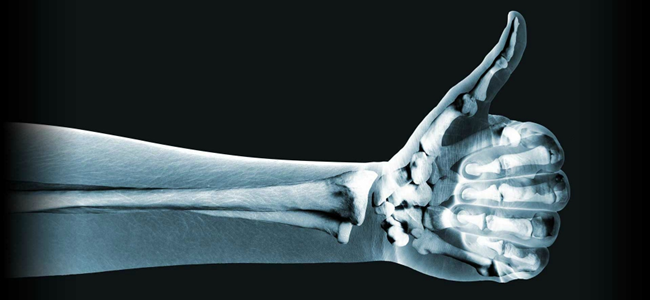
Source
Related: Link
Before I explain, it helps to fully understand everything discussed in this thread. Most people understand what an X-ray does, but many are unfamiliar with exactly what an X-ray is. Please skip ahead if needed!
What are X-rays?
...and for those that demand a little more explanation,
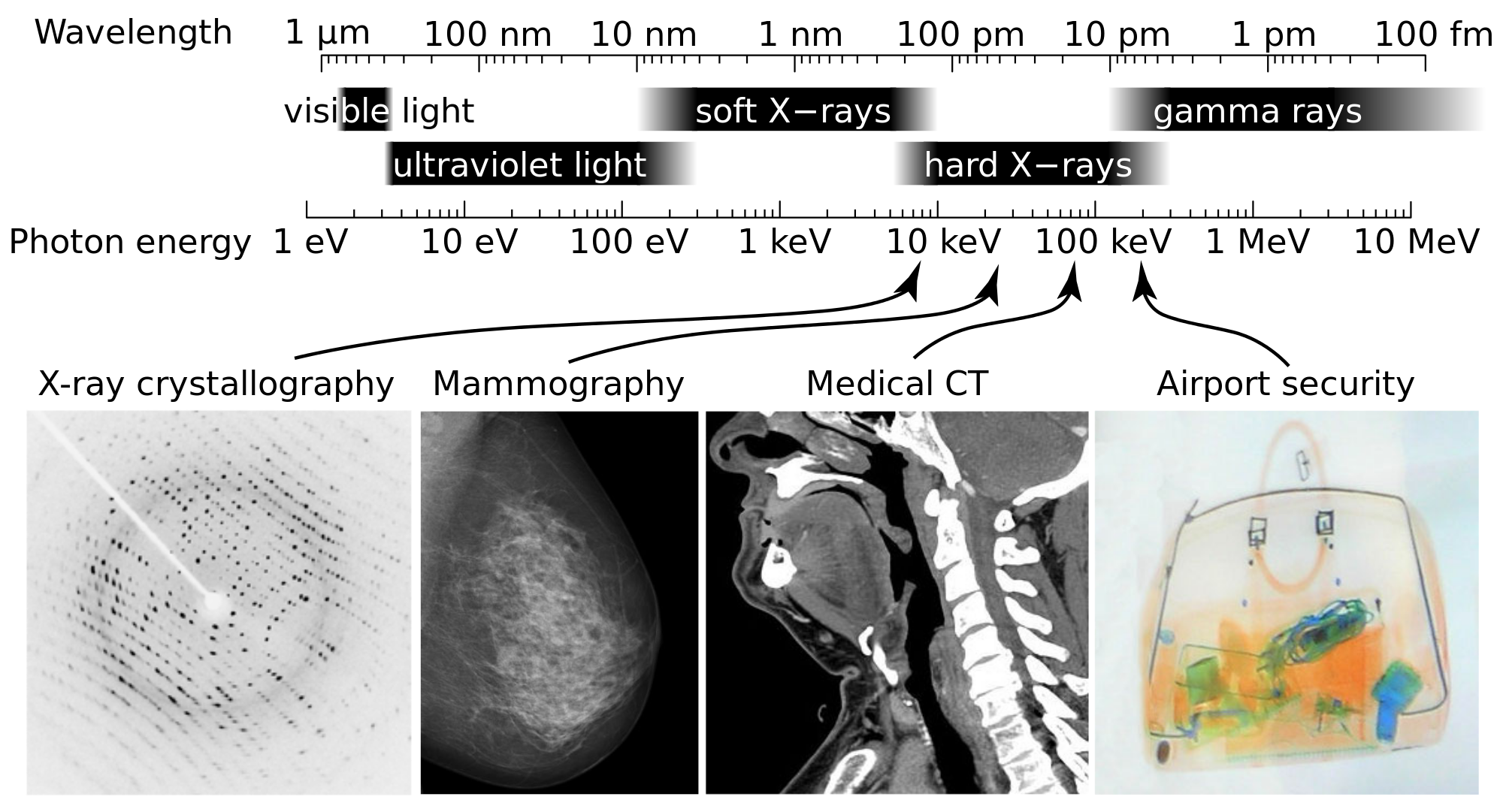
Link
Now that you understand what an X-ray is, it’s time to learn about tardigrades (water bears).
Good? On to the article…

In November 2015, researchers from NCU successfully sequenced the genome of a tardigrade and found that 17.5 (one-sixth), of it’s DNA was completely foreign.
The research exposed two major findings that required further investigation. Is there a connection between foreign DNA and the ability to survive extreme environments?
Another interesting characteristic of the tardigrade is how it acquires these foreign genes in the first place. The process is called “horizontal gene transfer.”

Nerd stuff:
This reminded me of Rogue from the X-Men, who would temporarily absorb another mutant’s powers by touching them directly, often times to gain an advantage.
Link
Researchers attempted to prove themselves wrong and possibly believed that the foreign DNA was the result of contamination. Before their next experiment, extreme measures were taken to exclude that possibility.
They heavily dosed the water bears with antibiotics and even soaked them in bleach. If any microbe was ably to survive the cleansing process, it was decided that it probably belonged their and at least gave the researchers the ability to identify and monitor any diehard contaminants.
As expected, the amount of foreign DNA discovered was substantially lower after the tardigrades genome was sequenced for the second time. Instead of discrediting the previous experiment that yielded 17.5% foreign DNA, the researchers at Tokyo University took the high road, calling it a “draft genome.” There might be a little hidden innuendo there, lol.
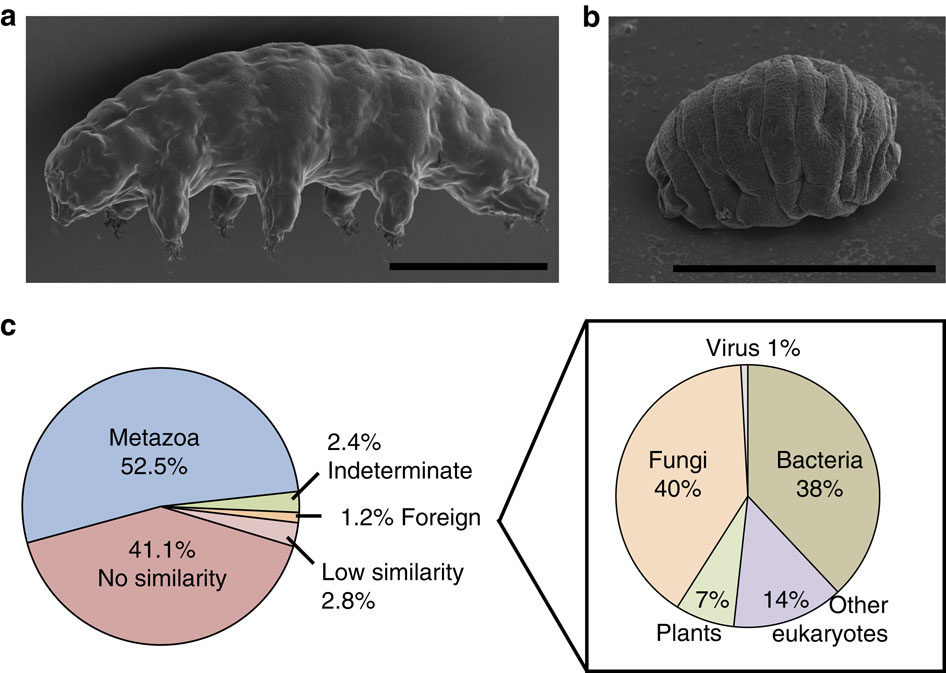

A study just broke out of Tokyo that says some eyebrow-raising things about water bears and their DNA.
Source
Related: Link
Before I explain, it helps to fully understand everything discussed in this thread. Most people understand what an X-ray does, but many are unfamiliar with exactly what an X-ray is. Please skip ahead if needed!
What are X-rays?
X-rays are a form of electromagnetic radiation, as are radio waves, infrared radiation, visible light, ultraviolet radiation and microwaves. One of the most common and beneficial uses of X-rays is for medical imaging. X-rays are also used in treating cancer and in exploring the cosmos.
...and for those that demand a little more explanation,
X-rays are roughly classified into two types: soft X-rays and hard X-rays. Soft X-rays fall in the range of the EM spectrum between (UV) light and gamma-rays.

Soft X-rays have comparatively high frequencies — about 3 × 1016 cycles per second, or hertz, to about 1018 Hz — and relatively short wavelengths — about 10 nanometers (nm), or 4 × 10−7 inches, to about 100 picometers (pm), or 4 × 10−8 inches. (A nanometer is one-billionth of a meter; a picometer is one-trillionth of a meter.)
Hard X-rays have frequencies of about 1018 Hz to higher than 1020 Hz and wavelengths of about 100 pm (4 × 10−9 inches) to about 1 pm (4 × 10−11 inches). Hard X-rays occupy the same region of the EM spectrum as gamma-rays. The only difference between them is their source: X-rays are produced by accelerating electrons, while gamma-rays are produced by atomic nuclei.
Link
Now that you understand what an X-ray is, it’s time to learn about tardigrades (water bears).
Tardigrades are notable for being the most resilient animal: they can survive extreme conditions that would be rapidly fatal to nearly all other known life forms.
They can withstand temperature ranges from 1 K (−458 °F; −272 °C) (close to absolute zero) to about 420 K (300 °F; 150 °C), pressures about six times greater than those found in the deepest ocean trenches, ionizing radiation at doses hundreds of times higher than the lethal dose for a human, and the vacuum of outer space.
They can go without food or water for more than 30 years, drying out to the point where they are 3% or less water, only to rehydrate, forage, and reproduce.
Good? On to the article…

In November 2015, researchers from NCU successfully sequenced the genome of a tardigrade and found that 17.5 (one-sixth), of it’s DNA was completely foreign.
“We had no idea that an animal genome could be composed of so much foreign DNA,” said co-author Bob Goldstein, faculty in the biology department in UNC’s College of Arts and Sciences. “We knew many animals acquire foreign genes, but we had no idea that it happens to this degree.”
The research exposed two major findings that required further investigation. Is there a connection between foreign DNA and the ability to survive extreme environments?
Another interesting characteristic of the tardigrade is how it acquires these foreign genes in the first place. The process is called “horizontal gene transfer.”

Nerd stuff:
(a) Subcellular localization of Dsup-GFP fusion proteins transiently expressed in HEK293T cells. Nuclear DNA was visualized by Hoechst 33342. Scale bars, 10 μm.
(b) Mobility shift of DNA by bacterially expressed Dsup protein in a dose-dependent manner (10, 50, 75 or 100 ng). Black arrowhead indicates the predicted size of the probe DNA (3 kbp, 10 ng). Red arrowhead indicates the position of the extremely slowly migrating DNA in the presence of Dsup protein. A similar extensive mobility shift was observed with histone H1.
This reminded me of Rogue from the X-Men, who would temporarily absorb another mutant’s powers by touching them directly, often times to gain an advantage.
First author Thomas Boothby, Goldstein and their collaborators revealed that tardigrades acquire about 6,000 foreign genes primarily from bacteria, but also from plants, fungi and Archaea, through a process called horizontal gene transfer – the swapping of genetic material between species as opposed to inheriting DNA exclusively from mom and dad.
Previously another microscopic animal called the rotifer was the record-holder for having the most foreign DNA, but it has about half as much as the tardigrade. For comparison, most animals have less than one percent of their genome from foreign DNA.
Link
Researchers attempted to prove themselves wrong and possibly believed that the foreign DNA was the result of contamination. Before their next experiment, extreme measures were taken to exclude that possibility.
They heavily dosed the water bears with antibiotics and even soaked them in bleach. If any microbe was ably to survive the cleansing process, it was decided that it probably belonged their and at least gave the researchers the ability to identify and monitor any diehard contaminants.
As expected, the amount of foreign DNA discovered was substantially lower after the tardigrades genome was sequenced for the second time. Instead of discrediting the previous experiment that yielded 17.5% foreign DNA, the researchers at Tokyo University took the high road, calling it a “draft genome.” There might be a little hidden innuendo there, lol.

When the results of the sequencing came back, the Tokyo researchers found that the tardigrade genome was composed of more like 1.2% foreign DNA, which is a far cry from a sixth of the thing’s genes coming from lateral gene transfer. In their paper, they politely refer to the previous, possibly adulterated results as a “draft genome.”
This is where it gets really interesting…
What researchers found amongst the new, less fragmented genome was a series of proteins that are directly responsible for protecting the water bear’s DNA from damage. Some of the proteins managed the tardigrade’s response to oxidative stress and others managed dehydration.

That's a good water bear! (don't ask, lol)
There are four copies of a gene coding that make proteins good at repairing double-strand breaks in DNA resulting from decompression, dehydration or freezing, as well as one more notable protein specific to water bears that are capable of repairing DNA damage from high doses of radiation. Amazingly, researchers have been able to isolate and watch these proteins do their work, verifying their functions.
This is where, as the articles states, “it gets a little weird.” Speaking of weird, the magic of the internet has produced what could only be described as a sweet freak'n tattoo. All the kids are getting tardigrades on their bicep! (internet fatigue is kicking in)

Anyway, check this out...
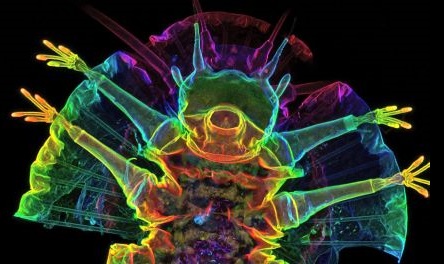
HOW COOL IT THAT!!!
We can’t expect every attempt to become an X-Men and absorb another organism’s powers to be successful, but I sure hope we never stop trying! Here is a thread I made last month that ties in nicely to this article.
US Government Is Once Again Funding Animal-Human Hybrids
The new policy aims to protect the embryos of nonhuman primates, but would lift the ban on funding experiments involving other species.
Tardigrades anyone?
To wrap it up, the water bear continues to amaze scientists with it’s ability to protect and repair it’s own DNA using proteins that apparently function the same way in human cells. Included below is the abstract of the experiment that does a god job summarizing everything explained in the article.
Extremotolerant tardigrade genome and improved radiotolerance of human cultured cells by tardigrade-unique protein
Abstract:
I’ll leave you with this very cool video I found describing the life and other interesting facts about water bears. Thanks for reading!
What researchers found amongst the new, less fragmented genome was a series of proteins that are directly responsible for protecting the water bear’s DNA from damage. Some of the proteins managed the tardigrade’s response to oxidative stress and others managed dehydration.

That's a good water bear! (don't ask, lol)
There are four copies of a gene coding that make proteins good at repairing double-strand breaks in DNA resulting from decompression, dehydration or freezing, as well as one more notable protein specific to water bears that are capable of repairing DNA damage from high doses of radiation. Amazingly, researchers have been able to isolate and watch these proteins do their work, verifying their functions.
The Tokyo University researchers were even able to watch the protein go about its work by tagging parts of the tardigrade genome with green fluorescent protein (GFP) and then watching as the protein migrated through cells in culture.
The damage-suppressing protein, Dsup, is closely associated with nuclear DNA; the scientists found it in the chromatin fragment of their cream-of-tardigrade soup. Chromatin is sort of like the options page of the DNA molecule, in that it determines which parts of the DNA molecule are transcribed.
This is where, as the articles states, “it gets a little weird.” Speaking of weird, the magic of the internet has produced what could only be described as a sweet freak'n tattoo. All the kids are getting tardigrades on their bicep! (internet fatigue is kicking in)

Anyway, check this out...
When the team treated human cells in culture with extract of tardigrade, the GFP-tagged proteins stuck to human DNA just like they stick to tardigrade DNA, and cheerfully started doing what they do best: tamping down oxidative stress.
When X-rays hit human cells, they do two kinds of damage. X-rays can cause direct DNA strand breaks, which are mostly single-strand. When they strike water molecules, they can also excite them into producing reactive oxygen species, which also cause single-strand breaks. High enough doses of X-rays can cause double-strand breaks.
The damage-suppressing protein Dsup went immediately to work on the culture of human cells, suppressing or repairing single-strand and double-strand breaks by about 40%.

HOW COOL IT THAT!!!
We can’t expect every attempt to become an X-Men and absorb another organism’s powers to be successful, but I sure hope we never stop trying! Here is a thread I made last month that ties in nicely to this article.
US Government Is Once Again Funding Animal-Human Hybrids
The federal government announced plans Thursday to lift a moratorium on funding of certain controversial experiments that use human stem cells to create animal embryos that are partly human.
The new policy aims to protect the embryos of nonhuman primates, but would lift the ban on funding experiments involving other species.
Tardigrades anyone?
To wrap it up, the water bear continues to amaze scientists with it’s ability to protect and repair it’s own DNA using proteins that apparently function the same way in human cells. Included below is the abstract of the experiment that does a god job summarizing everything explained in the article.
Extremotolerant tardigrade genome and improved radiotolerance of human cultured cells by tardigrade-unique protein
Abstract:
Tardigrades, also known as water bears, are small aquatic animals. Some tardigrade species tolerate almost complete dehydration and exhibit extraordinary tolerance to various physical extremes in the dehydrated state.
Here we determine a high-quality genome sequence of Ramazzottius varieornatus, one of the most stress-tolerant tardigrade species. Precise gene repertoire analyses reveal the presence of a small proportion (1.2% or less) of putative foreign genes, loss of gene pathways that promote stress damage, expansion of gene families related to ameliorating damage, and evolution and high expression of novel tardigrade-unique proteins.
Minor changes in the gene expression profiles during dehydration and rehydration suggest constitutive expression of tolerance-related genes. Using human cultured cells, we demonstrate that a tardigrade-unique DNA-associating protein suppresses X-ray-induced DNA damage by ~40% and improves radiotolerance. These findings indicate the relevance of tardigrade-unique proteins to tolerability and tardigrades could be a bountiful source of new protection genes and mechanisms.
I’ll leave you with this very cool video I found describing the life and other interesting facts about water bears. Thanks for reading!
edit on 25-9-2016 by eisegesis because: (no reason given)
Oh oh I wonder what would be the future consequences for this?
There is a movie that covers the issue of what happens when you create a GM human
In a side note would there be a divide between Psychics and GM Humans? While yes they both have extraordinary powers, only one group are born naturally with it.
There is a movie that covers the issue of what happens when you create a GM human
In a side note would there be a divide between Psychics and GM Humans? While yes they both have extraordinary powers, only one group are born naturally with it.
edit on 9/25/2016 by starwarsisreal because: (no reason given)
Fascinating research results and what a well-compiled and presented post. You had me from the X-rayed thumbs-up.
It'd be interesting to see if those proteins could repair the telomeres in our DNA. Those are the 'caps' on the strands, kind of like the hard
plastic tips on shoelaces. Over time the telomeres break down from repeated replications which leads to damage of the main DNA strands segments.
Keep the telomeres healthy longer, the DNA stays stable longer.
Keep the telomeres healthy longer, the DNA stays stable longer.
A race of the rich who can live after the bomb!
and us! the Mutants.
and us! the Mutants.
Am I the only one that is extremely worried by this? The implications are not only vast and exciting but extremely dangerous. We are screwing with
things that we DO NOT fully understand.
With great power comes great responsibility. And what have we learned about humans thus far in our lives?
With great power comes great responsibility. And what have we learned about humans thus far in our lives?
edit on
25-9-2016 by Boomy327 because: (no reason given)
a reply to: Teikiatsu
telomeres - the Holy grail of immortality....
en.wikipedia.org...
telomeres - the Holy grail of immortality....
en.wikipedia.org...
Two recent studies on long-lived seabirds demonstrate that the role of telomeres is far from being understood . In 2003, scientists observed that the telomeres of Leach's storm-petrel (Oceanodroma leucorhoa) seem to lengthen with chronological age, the first observed instance of such behaviour of telomeres.[34] In 2006, Juola et al.[35] reported that in another unrelated, long-lived seabird species, the great frigatebird (Fregata minor), telomere length did decrease until at least c.40 years of age (i.e. probably over the entire lifespan), but the speed of decrease slowed down massively with increasing ages, and that rates of telomere length decrease varied strongly between individual birds. They concluded that in this species (and probably in frigatebirds and their relatives in general), telomere length could not be used to determine a bird's age sufficiently well. Thus, it seems that there is much more variation in the behavior of telomere length than initially believed. Furthermore, Gomes et al. found, in a study of the comparative biology of mammalian telomeres, that telomere length of different mammalian species correlates inversely, rather than directly, with lifespan, and they concluded that the contribution of telomere length to lifespan remains controversial.[36] Harris et al. found little evidence that, in humans, telomere length is a significant biomarker of normal aging with respect to important cognitive and physical abilities.[37] Gilley and Blackburn tested whether cellular senescence in paramecium is caused by telomere shortening, and found that telomeres were not shortened during senescence.[38]
originally posted by: Teikiatsu
It'd be interesting to see if those proteins could repair the telomeres in our DNA. Those are the 'caps' on the strands, kind of like the hard plastic tips on shoelaces. Over time the telomeres break down from repeated replications which leads to damage of the main DNA strands segments.
Keep the telomeres healthy longer, the DNA stays stable longer.
The tips to our shoelaces are called aglets.
One also might question the direction, genetically, of repairs to our telomeres as the DNA is gone, there is no structure upon which to base the repaired strand.
This explains the NEW Law enforcement agency. Mutation Response Vehicle! Has the Apocalypse Zombie War finally make it National? Who's
funding this? 3 Mile Island? Military Special Ops? Or is this a research project "GONE WRONG?"
X-Ray resistance? That's sort of cool, I guess.
However, give me a call when it can give me X-ray vision.
However, give me a call when it can give me X-ray vision.
edit on 2016-9-25 by Soylent Green Is People because: (no reason given)
originally posted by: chr0naut
originally posted by: Teikiatsu
It'd be interesting to see if those proteins could repair the telomeres in our DNA. Those are the 'caps' on the strands, kind of like the hard plastic tips on shoelaces. Over time the telomeres break down from repeated replications which leads to damage of the main DNA strands segments.
Keep the telomeres healthy longer, the DNA stays stable longer.
The tips to our shoelaces are called aglets.
One also might question the direction, genetically, of repairs to our telomeres as the DNA is gone, there is no structure upon which to base the repaired strand.
If one piece of the two strands is still present, there would be something for the missing piece to be reconstructed with. If not, the telomere in the shorter piece will be shorter in succeeding cells.
originally posted by: Teikiatsu
Keep the telomeres healthy longer, the DNA stays stable longer.
Your cells know HOW to do this already. They just don't. Might not take more than a signalling protein to convince them to turn on the telomere repair kit for a bit, then turn it back off.
Would this protein be able to reverse certains forms of cancer?
Fascinating stuff. I don't like the DNA manipulation though. But I don't doubt the majority of us would do just about anything to keep our health
and life.
new topics
-
Paradox of Progress
Ancient & Lost Civilizations: 3 hours ago -
Joe Biden gives the USA's Highest Civilian Honor Award to Hillary Clinton and George Soros.
US Political Madness: 6 hours ago -
Winter Storm
Fragile Earth: 6 hours ago -
Biden Face Planted Somewhere
Politicians & People: 8 hours ago -
A great artist and storyteller, for kids of all ages
General Entertainment: 9 hours ago
top topics
-
Joe Biden gives the USA's Highest Civilian Honor Award to Hillary Clinton and George Soros.
US Political Madness: 6 hours ago, 13 flags -
What Is 'Quad Demic'? Mask Mandate Returns In These US States
Diseases and Pandemics: 13 hours ago, 11 flags -
Volcano Watch 2025
Fragile Earth: 15 hours ago, 8 flags -
The Future of fashion .
Social Issues and Civil Unrest: 13 hours ago, 8 flags -
Winter Storm
Fragile Earth: 6 hours ago, 7 flags -
Bin Cyber Junk…
Short Stories: 14 hours ago, 6 flags -
Biden Face Planted Somewhere
Politicians & People: 8 hours ago, 5 flags -
A great artist and storyteller, for kids of all ages
General Entertainment: 9 hours ago, 5 flags -
Paradox of Progress
Ancient & Lost Civilizations: 3 hours ago, 4 flags -
The Undertones - Teenage Kicks
Music: 15 hours ago, 3 flags
active topics
-
Post A Funny (T&C Friendly) Pic Part IV: The LOL awakens!
General Chit Chat • 7988 • : KrustyKrab -
Winter Storm
Fragile Earth • 18 • : RickyD -
What Is 'Quad Demic'? Mask Mandate Returns In These US States
Diseases and Pandemics • 29 • : TheRickestRick -
Paradox of Progress
Ancient & Lost Civilizations • 3 • : BingoMcGoof -
Here we again... CHINA having mass outbreak of something
Diseases and Pandemics • 24 • : NoCorruptionAllowed -
A great artist and storyteller, for kids of all ages
General Entertainment • 1 • : angelchemuel -
-@TH3WH17ERABB17- -Q- ---TIME TO SHOW THE WORLD--- -Part- --44--
Dissecting Disinformation • 3931 • : RelSciHistItSufi -
Joe Biden gives the USA's Highest Civilian Honor Award to Hillary Clinton and George Soros.
US Political Madness • 29 • : caterpillage -
NJ Drones tied to Tesla explosion at Trump Las vegas
General Conspiracies • 45 • : glen200376 -
New Jersey-Teachers Can Now Be Certified Without Passing Basic Reading Writing Math Testing
Education and Media • 14 • : boatguy12

